Coastal Brown Ants
- Article
- Coastal Brown Ants
Coastal Brown Ants
Scientific Name: Pheidole megacephala
How to identify coastal brown ants
Coastal brown ants (Pheidole megacephala) are one of the world's worst invasive ant species.
They are a golden brown to brown coloured ant species with both major and minor worker castes. Most soldiers are in the minor caste and are 1.5-2.5mm long, meanwhile 1% of workers are in the major caste and are 3.5-4.5mm long with enlarged heads, which is why these ants are also known as big-headed ants.
While coastal brown ants can sting, it’s not painful for humans and when crushed they have no obvious odour.
Coastal brown ants mainly consume fats/oils and proteins, for example dead insects and meat particles.

Where are coastal brown ants commonly found?
Coastal brown ants are an urban pest that can usually be found within buildings, in lawns or under paths.
As they dwell in the soil, a tell-tale sign of infestation of coastal brown ants are lines of inter-connected holes and small mounds of excavated soil.
What is the biology and lifecycle of coastal brown ants?
Each queen lays up to 290 eggs per month. The eggs hatch after two to four weeks and the legless white larvae, which are fed by the workers, pupate about a month later. The adult workers emerge ten to twenty days later.
Why are coastal brown ants considered pests?
Coastal brown ants are largely considered nuisance ants however a queen will often take a selection of workers and establish a new colony nearby, leading to the formation of ‘super-colonies’ where interconnected nests act as a single colony that can occupy many hectares and displace native ant species until they are the only ant species left in the area.
Their excavations can be so extensive that they destabilise paving and cause plants and lawns to dry out due to over-aeration of their roots.
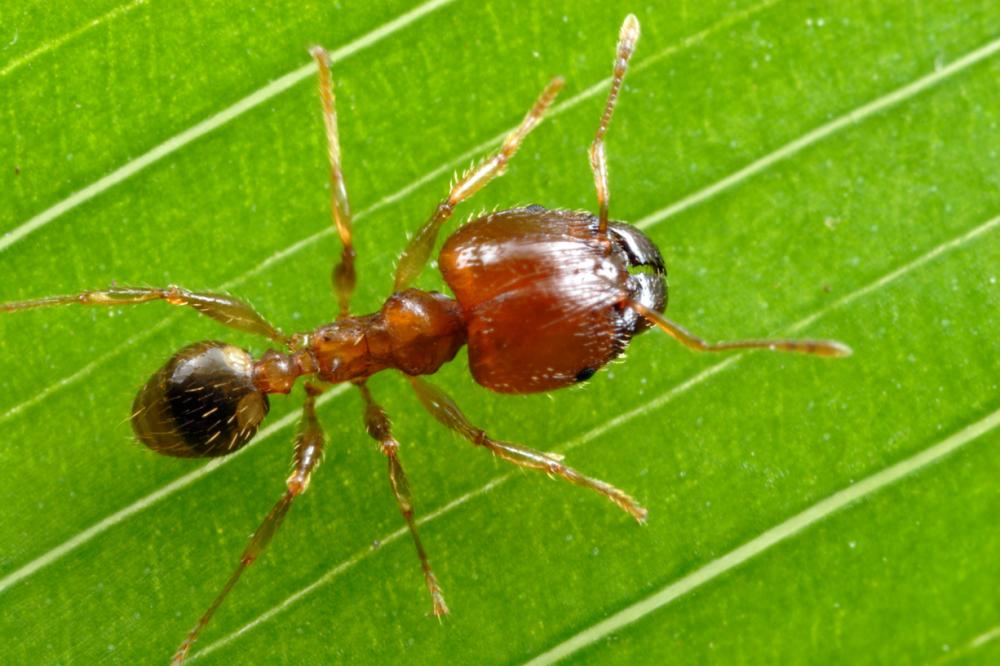
What’s the most effective method for controlling coastal brown ants?
For optimal control of coastal brown ants, use oil-based baits containing the active ingredient Hydramethylnon or Fipronil. Ants will collect these small particles and carry them back to their nests resulting in total control of the colony.
To maximise effectiveness, make sure to widely spread the bait over the infested area as per instructions on the product label. Using hand-held rotary or spinning-disc spreaders is ideal for even distribution.
Never heap bait around the ant mounds as this increases the risk to non-target organisms and has limited effectiveness in the control of coastal brown ants. Do not limit your application to areas of obvious infestation, rather, treat the entire area as infestations exist in lawns and garden beds and the ants can quickly re-invade if only a small area of obvious infestation has been treated.
Find everything you need for control of coastal brown ants from your local Globe Pest Solutions branch or shop online now.
PRODUCT SOLUTIONS
-
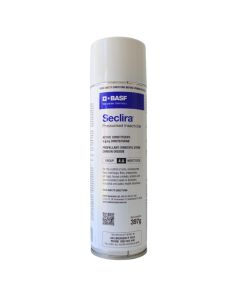 Seclira Pressurised Insecticide 397g5g/kg Dinotefuran
Seclira Pressurised Insecticide 397g5g/kg DinotefuranSeclira Pressurised Insecticide is a fast-acting, non-repellent, ready-to-use product with System III compatibility for the control of a broad range of pests including ants, and cockroaches.
-
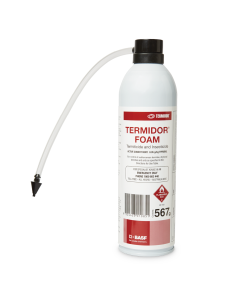 Termidor Foam Termiticide and Insecticide0.05g/kg Fipronil
Termidor Foam Termiticide and Insecticide0.05g/kg FipronilTermidor Foam is a robust dry foam formulation that expands to fill termite nests, galleries and other active workings. Termidor Foam is specifically developed for stage 1 colony elimination with a formulation that maximises the Termidor Transfer Effect.
-
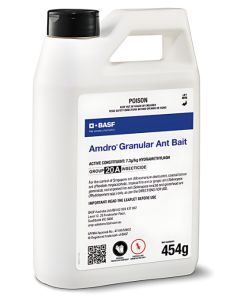 Amdro Granular Ant Bait 454g7.3g/kg Hydramethylnon
Amdro Granular Ant Bait 454g7.3g/kg HydramethylnonAmdro Ant Granules is an effective granular bait insecticide that controls ants the only sure way - by eliminating the Queen. Fast acting to ants including specific destructive ant species, namely Singapore Ant, Coastal Brown Ant, Tropical Fire Ant (Ginger Ant), Red Imported Fire Ant and Green-head Ant.
-
 Coopex Dust Insecticidal Dusting Powder10g/kg Permethrin
Coopex Dust Insecticidal Dusting Powder10g/kg PermethrinCoopex Dust Insecticidal Dusting Powder is registered for the control of cockroaches, ants, fleas, silverfish and bed bugs in and around domestic and industrial premises, food preparation and storage areas. Also for control of mushroom flies in mushroom housing and bees in wall cavities.
-
 Biflex Aqua Max Insecticide and Termiticide100g/L Bifenthrin
Biflex Aqua Max Insecticide and Termiticide100g/L BifenthrinBiflex AquaMax is the first ever Professional Strength, multi-insecticide and termiticide. Effective on a wide range of common household pests and all termite species in Australia.
-
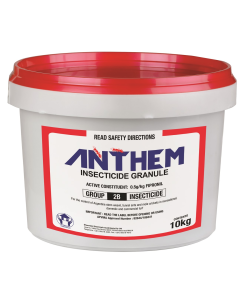 Anthem Insecticide Granules0.5g/kg Fipronil
Anthem Insecticide Granules0.5g/kg FipronilAnthem Insecticide Granule contains 0.5g/kg of Fipronil and is used for the control of Argentine stem weevil, mole crickets and ants in commercial and recreational turf and control of ants in external surrounds of buildings and structures
-
 Biforce Granular Insecticide2g/kg Bifenthrin
Biforce Granular Insecticide2g/kg BifenthrinA ready to use contact residual granular insecticide for external control of ants, fleas and ticks in areas such as gardens, lawns, around BBQs and other external surrounds of buildings and structures.
-
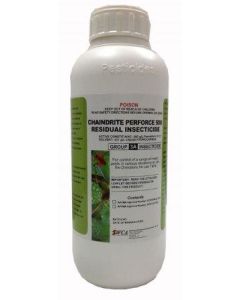 Chaindrite Perforce 500 Residual Insecticide500 g/L Permethrin
Chaindrite Perforce 500 Residual Insecticide500 g/L PermethrinChaindrite Perforce 500 Residual Insecticide is formulated for the control of a broad range of insects in various situations as per the Directions for Use table.
-
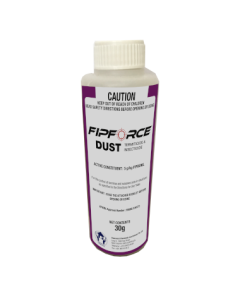 Fipforce Dust Termiticide and Insecticide5g/kg Fipronil
Fipforce Dust Termiticide and Insecticide5g/kg FipronilFipforce Dust Termiticide and Insecticide contains 5g/kg of Fipronil which is toxic to insects by contact or ingestion. FipForce Dust is applied through a hand duster to help in the control of Termites, Nuisance ants and Cockroaches. It has a mineral based carrier which flows extremely well and is less susceptible to moisture than cellulose based dusts. Less moisture build-up means less clogging of the application procedure.
Out of stock -
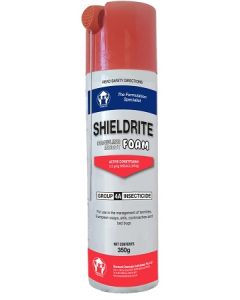 Shieldrite Crawling Insect Foam 350g0.5g/kg Imidacloprid
Shieldrite Crawling Insect Foam 350g0.5g/kg ImidaclopridShieldrite Crawling Insect Foam is a non repellent suspension concentrate formulated into a ready to use foam for the use in the management of pest insects including Termites, European wasps, Ants, Cockroaches and Bed bugs.
-
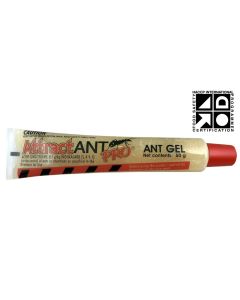 Attractant PRO Ant Gel Bait 50g0.5g/kg Indoxacarb
Attractant PRO Ant Gel Bait 50g0.5g/kg IndoxacarbAttractant PRO Ant Gel is formulated for the control of major pest ants including Argentine ant, Black house ant, Coastal brown ant, Ghost ant, Hairy ant/Crazy ant, Pedicel ant, Pennant ant, Pharaoh’s ant, Red imported fire ant, Sugar ant.
-
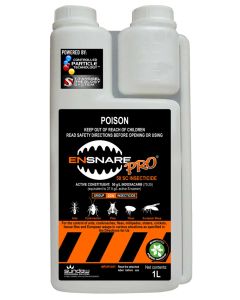 Ensnare Pro 50SC Insecticide 1L50g/L Indoxacarb
Ensnare Pro 50SC Insecticide 1L50g/L IndoxacarbEnsnarePRO is a non-repellent residual suspension concentrate spray. It can be used in conjunction with baits without reducing the performance of the bait. Ants, cockroaches and flies don’t know it’s there. The ‘non-repellent’ properties of this formulation does not interfer with insects natural behaviour...
-
 Demand 100CS Insecticide100g/L Lambda-Cyhalothrin
Demand 100CS Insecticide100g/L Lambda-CyhalothrinDemand 100CS is a cost effective and long lasting insecticide for the controls of ants, cockroaches, fleas, flies, mosquitoes, silverfish, ticks and spiders for up to up to 12 months indoors and up to 3 months outdoors. It can be applied to foliage for up to 14 weeks of mosquito control.
-
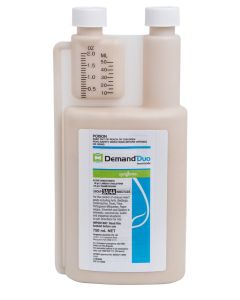 Demand Duo Insecticide 750mL38g/L Lambda-Cyhalothrin, 125g/L Thiamethoxam
Demand Duo Insecticide 750mL38g/L Lambda-Cyhalothrin, 125g/L ThiamethoxamDemand Duo Insecticide is a general pest spray that controls a wide range of pests, simply and effectively. The unique ZC formulation combines a suspension concentrate (SC) of Thiamethoxam and capsule suspension (CS) of Lambda-cyhalothrin. It is registered for the control of pests including ants, bedbugs, cockroaches, fleas, flies, portuguese millipedes, paper wasps, spiders and more.
Out of stock -
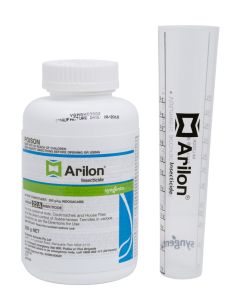 Arilon Insecticide200g/kg Indoxacarb
Arilon Insecticide200g/kg IndoxacarbArilon is a non-repellent insecticide which provides excellent control of ants, cockroaches and other key insect pest species on a variety of interior and exterior surfaces. With its powerful active ingredient and wide-ranging application, Arilon delivers exceptional results against ants, cockroaches, houseflies, and termites—indoors, outdoors, and on various surfaces. Its flexibility and superior efficacy make it indispensable for commercial and domestic pest control programs.
-
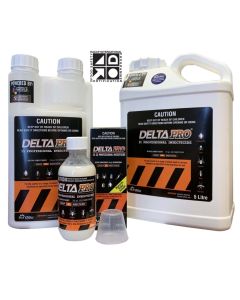 Delta Pro 25SC Professional Insecticide25g/L Deltamethrin
Delta Pro 25SC Professional Insecticide25g/L DeltamethrinFor the control of a range of insect pests such as spiders, cockroaches, flies, ants, mosquitoes in various situations.
-
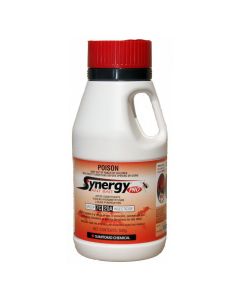 Synergy Pro Ant Bait 500gm3.65g/kg Hydramethylnon, 2.5g/kg Pyriproxyfen
Synergy Pro Ant Bait 500gm3.65g/kg Hydramethylnon, 2.5g/kg PyriproxyfenSynergy Pro Ant Bait 500gm is a granular ant bait registered for the control of a range of ants in domestic, commercial and agricultural situations.
-
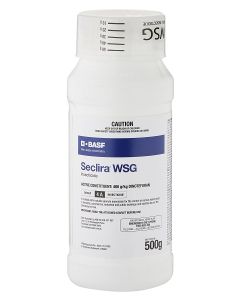 Seclira WSG Insecticide400g/kg Dinotefuran
Seclira WSG Insecticide400g/kg DinotefuranSeclira® WSG insecticide is a non-staining, odourless, broad spectrum, general insect control product for indoor and outdoor use.
-
 Termidor SC Residual Termiticide100g/L Fipronil
Termidor SC Residual Termiticide100g/L FipronilTermidor SC Residual Termiticide and Insecticide provides superior levels of control across subterranean termites, ants, cockroaches, spiders, and flies.
-
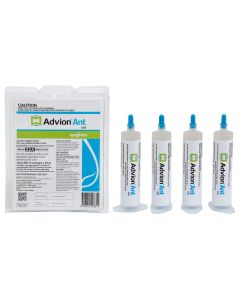 Advion Ant Gel0.5g/kg Indoxacarb
Advion Ant Gel0.5g/kg IndoxacarbAdvion Ant Gel targets most pest species of ants, including all key sweet feeders plus additional ant species. This is a highly attractive ant gel that locks in moisture for extended appeal to ants and uses active ingredient Indoxacarb.
-
 Suspend Flexx Insecticide25g/L Deltamethrin
Suspend Flexx Insecticide25g/L DeltamethrinSuspend Flexx Insecticide is a synthetic pyrethroid (3A) formulation for the knockdown and residual control of a range of insect pests in various indoor and outdoor situations.
-
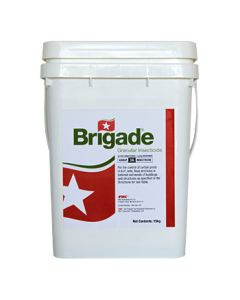 Brigade Granular Insecticide2g/kg Bifenthrin
Brigade Granular Insecticide2g/kg BifenthrinBrigade Granular Insecticide is formulated for the control of certain pests in turf and for control of ants, fleas and ticks in external surrounds of buildings and structures. Permit held for application in potting media for use in container grown ornamentals to control Red Imported Fire Ants for various intervals.
-
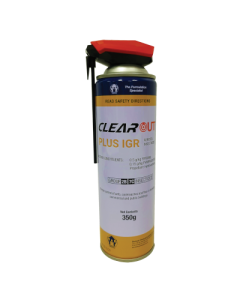 Clear Out Plus IGR Aerosol Insecticide 350g0.5g/kg Fipronil, 0.15g/kg Pyriproxyfen
Clear Out Plus IGR Aerosol Insecticide 350g0.5g/kg Fipronil, 0.15g/kg PyriproxyfenClear Out Plus IGR Aerosol Insecticide is a residual surface crack & crevice or spot treatment for control of ants, cockroaches and flies in domestic, commercial and public buildings.
-
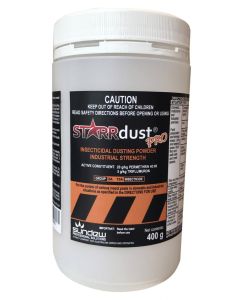 Starrdust PRO One-Shot Insecticidal Dust 400g20g/kg Permethrin, 5g/kg Triflumuron
Starrdust PRO One-Shot Insecticidal Dust 400g20g/kg Permethrin, 5g/kg TriflumuronThe Starrdust PRO One-Shot Insecticidal Dust 400g is an industrial-strength dust designed for use with the Starrdust PRO Duckbill Duster. It is a ready-to-use broad-spectrum insecticide with a unique formulation. It controls a wide range of insect pests including cockroaches, silverfish, spiders, ants, fleas, carpet beetles, bed bugs, European wasps, feral honey bees, bird mites, subterranean termites, hide beetles, millipedes, woodlice and clothes moths.
-
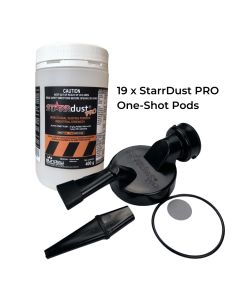 Starrdust PRO One-Shot Insecticidal Dust 19 x 400g + Duckbill20g/kg Permethrin, 5g/kg Triflumuron
Starrdust PRO One-Shot Insecticidal Dust 19 x 400g + Duckbill20g/kg Permethrin, 5g/kg TriflumuronA convenient kit of 19 x Starrdust PRO One-Shot Insecticidal Dust 400g Pods and a bonus Duckbill Duster. StarrDust PRO is an industrial-strength dust designed for use with the Starrdust PRO Duckbill Duster. It is a ready-to-use broad-spectrum insecticide with a unique formulation. It controls a wide range of insect pests including cockroaches, silverfish, spiders, ants, fleas, carpet beetles, bed bugs, European wasps, feral honey bees, bird mites, subterranean termites, hide beetles, millipedes, woodlice and clothes moths.
-
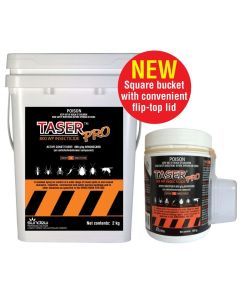 Taser Pro 800 WP Insecticide800g/L Bendiocarb
Taser Pro 800 WP Insecticide800g/L BendiocarbTaser Pro Insecticide is a residual broad spectrum non-repellent spray for the control of a wide range of insect pests in domestic, farm, agricultural, industrial, commercial and public service buildings.
-
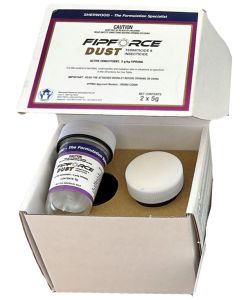 Fipforce Dust Termiticide and Insecticide (Pack of 2 x 5g)5g/kg Fipronil
Fipforce Dust Termiticide and Insecticide (Pack of 2 x 5g)5g/kg FipronilFipforce Dust Termiticide and Insecticide contains 5g/kg of Fipronil which is toxic to insects by contact or ingestion. FipForce Dust is applied through a hand duster to help in the control of Termites, Nuisance ants and Cockroaches. It has a mineral based carrier which flows extremely well and is less susceptible to moisture than cellulose based dusts. Less moisture build-up means less clogging of the application procedure.
-
 Tempo Residual Insecticide 1L25 g/L betacyfluthrin
Tempo Residual Insecticide 1L25 g/L betacyfluthrinTempo Residual Insecticide is a fast-acting, knock-down, broad-spectrum insecticide for general insect control in domestic and commercial situations, as well as for the control of pest insects of turf and ornamental plants.
-
 Killmaster Zero Pest Insecticide Strip 65g
Killmaster Zero Pest Insecticide Strip 65gKillmaster Zero Pest Strip is a highly effective, long-lasting solution for managing a wide range of flying and crawling insect pests, including cockroaches, moths, silverfish, ants, and flies. Designed for non-living areas such as storage spaces, store rooms, and industrial bins, this pest strip provides hassle-free protection for up to 4 months.
Out of stock
JOIN OUR NEWSLETTER NOW!
Be the first to hear about the latest specials, products, tips and ideas.

